Summary
There is a quote that says, “Dialogue is easy. It’s what you’ve been doing almost every day, most of your life” (Josip Novakovich). Sure, dialogue seems simple; it’s having a conversation. But what about writing dialogue? To write conversations between characters, or even for a character with themselves, takes some work. You must sense a bit about the character’s personality, motives, and relationships before determining what they might say. In this lesson, students will practice writing internal and external dialogue by using characters in art as inspiration. This lesson includes optional modifications for distance learning. Resources for use in Google Classroom are included.
Essential Question(s)
How can art facilitate conversations?
Snapshot
Engage
Students observe a piece of art and complete a modified version of “How Am I Feeling? What Am I Thinking?” via a discussion. After the discussion, they watch a short clip of a similar piece of art actually explaining its thoughts.
Explore
Students examine a piece of art with two characters to imagine what the characters are thinking and feeling in order to consider perspective. Then, they examine a piece of art with one character and imagine what the character is thinking and feeling.
Explain
Students connect the works of art to definitions of dialogue. They engage in a card sort of works of art, examples of internal dialogue, and examples of external dialogue. Lastly, they write a justification for these choices
Extend
Students write original dialogue for characters in a work of art. They have an optional, additional extension activity of exploring the career-talk from an award-winning graphic designer and illustrator.
Evaluate
Students record their original dialogue, accompanied by the art inspiration, in a Flipgrid post.
Materials
Sticky notes (multiple per student)
Wifi or Internet access
Dialogue Art handout (attached; 1 per student or group of students)
Card Sort handout (attached; 1 per student or group of students)
Internal and External Dialogue Examples handout (attached; 1 per student)
Lesson Slides (attached)
Engage
Begin your lesson by displaying slide 3 and ask your students the following questions: What do you think the knight in this image is feeling? What do you think the knight in this image is thinking?
Inform your students that the instructional strategy called How Am I Feeling? What Am I Thinking? has been slightly modified and instead of self-evaluating their own learning, students should self-evaluate how another figure feels and what they think.
After a brief class discussion over the image of the knight, move to slide 4 and share the video Sir Cadogan Asks for the Password, in which a piece of art comes to life and the knight, Sir Cadogan, is asking students for a password. Discuss the video with your students.
Move to slide 5-6 and share the lesson’s essential question and learning objectives with your students.
Explore
Move to slide 7. Pass out a sticky note to each student for the next activity. Inform them that the image they are about to see does not have an included video so it is up to them to evaluate how the figures feel and think. Instruct them to divide the sticky note in two, diagonally. Label one side “How am I feeling?” and the other side “What am I thinking?”
Tell students that they will be examining a piece of art. The piece of art has two characters in it. They are to choose one of the characters and, on their sticky note, jot down what they imagine their chosen character is both feeling and thinking.
Display slide 8 with American Gothic (1930) by Grant Wood. Give students 5 minutes to jot down initial thoughts about their chosen figure. After enough time has passed, invite students to share their responses with an elbow partner and then take responses from volunteers.
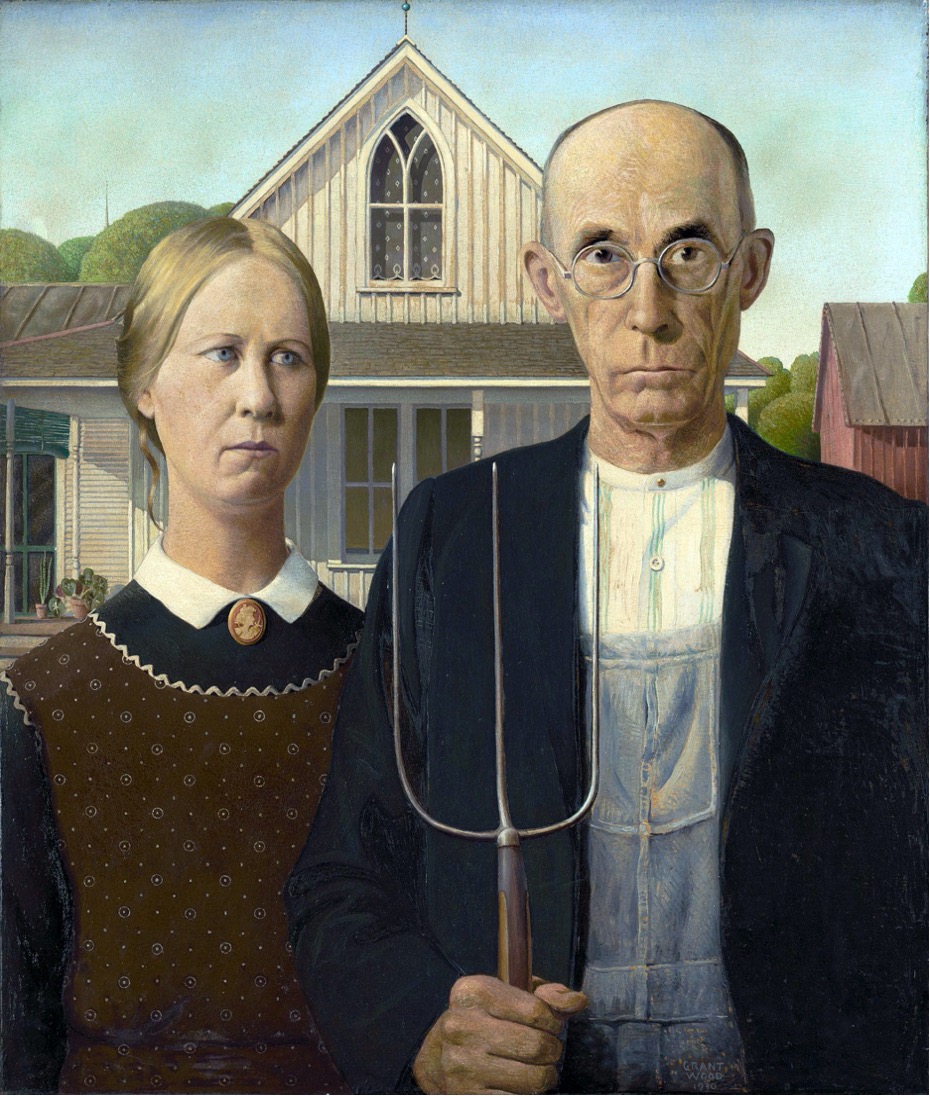
Still displaying slide 8, tell students that they likely imagined these characters talking to each other and what was said, not just what was thought or felt. To understand how a character might talk, consider what they are thinking and feeling. Ask students if they know the literary term for a conversation that characters have (dialogue).
Move to slide 9 and share the definition for dialogue: a literary technique in which writers employ two or more characters to be engaged in conversation with one another. In a nutshell, it’s when characters talk to each other. Ask students where they have seen dialogue (books, movies, TV, etc.).
Move to slide 10 and share the following quote about dialogue with your students:
“Dialogue is easy. It’s what you’ve been doing almost every day, most of your life” (Josip Novakovich).
Move to slide 11 with The Scream (1893) by Edvard Munch and pass out another sticky note. Instruct them to, again, divide it into two. Give students 5 minutes to jot down initial thoughts about what the figure in the painting is feeling and thinking.

After enough time has passed, invite students to share their responses with an elbow partner and then take responses from volunteers. Ask students: What was different about this exercise with The Scream compared to with American Gothic?
Display slide 12 with both American Gothic and The Scream. Ask students to think about dialogue with these two pieces of art. Ask students: What opportunities are available in the first picture that are not readily apparent in the second? Students may respond that the characters in the first image can talk to each other, and the character in the second is alone and could therefore only talk to themselves.
Tell students that dialogue could take place in a few ways in these two different works of art. First though, as a class, two different types of dialogue will be established: internal and external dialogue.
Explain
Move to slide 13 and pass out copies of the attached handout Internal and External Dialogue Examples. Discuss the definition of external dialogue: a simple conversation is had between two characters.
Use quotation marks for dialogue said out loud.
Punctuation goes inside the quotation marks.
Move to slide 14 and review the examples on the slide and in the handout.
Move to slide 15 and discuss the definition of internal dialogue: the characters speak to themselves and reveal their personalities.
Also referred to as internal monologue.
Do not use quotation marks with internal dialogue.
Some writers use italics, although it’s not a firm rule.
Move to slide 16 and review the examples on the slide and in the handout.
Move to slide 17 and share Grammar for Kids: Punctuating Dialogue video, which involves the rules of punctuating dialogue. Make sure to pause where new rules are introduced.
In this video, there are points with example sentences with errors for students to correct, followed by the correct answers. Pause at these points to give students the chance to interact with sample questions:
1:44: “Add quotation marks.”
2:15: “Capitalize the first letter of each dialogue.”
3:30: “Where the does the comma belong?”
Show slide 18 and ask students what “Think of a door…” means to them with regard to dialogue punctuation. Students should use what they watched in the video to answer this question out loud.
Move to slide 19 and share the instructions for the Card Sort activity and instruct your students to connect their understanding of internal and external dialogue to a new task with an artwork. Students can work alone or in pairs.
In this Card Sort, there are three columns:
Paintings with one or more than one character
Examples of external dialogue
Examples of internal dialogue
Instruct your students to first choose two (2) pieces of dialogue to accompany one (1) work of art. They should choose one (1) piece of internal dialogue and one (1) piece of external dialogue.
Next, display slide 20. Instruct your students to write on a separate piece of paper or share out loud to a partner. They will formulate an explanation for why the piece of internal dialogue matches their work of art and an explanation for why the piece of external dialogue matches their work of art. Tell them to get creative with their justifications! Students should create a backstory for the characters based on context clues to rationalize the dialogue choices.
Ask students how they knew which examples were internal dialogue and which were external. Have volunteers share out their piece of art and why they chose specific dialogue examples to go with the work.
Extend #1
Display slide 21 which has several works of art displayed, and pass out the attached Dialogue Art handout. In additional to The Scream and American Gothic, students also have an opportunity to choose from one of the following images:
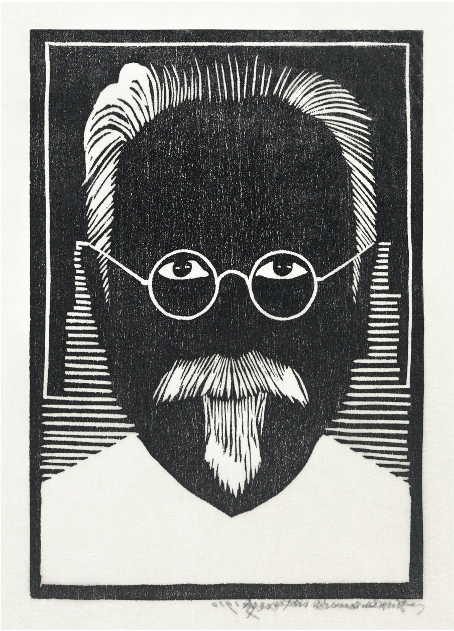
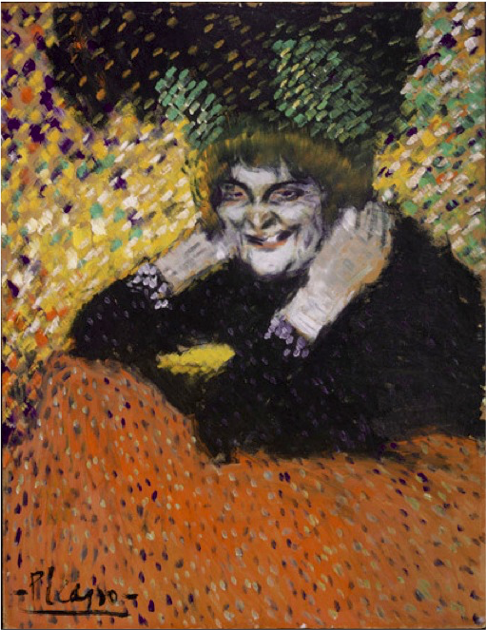
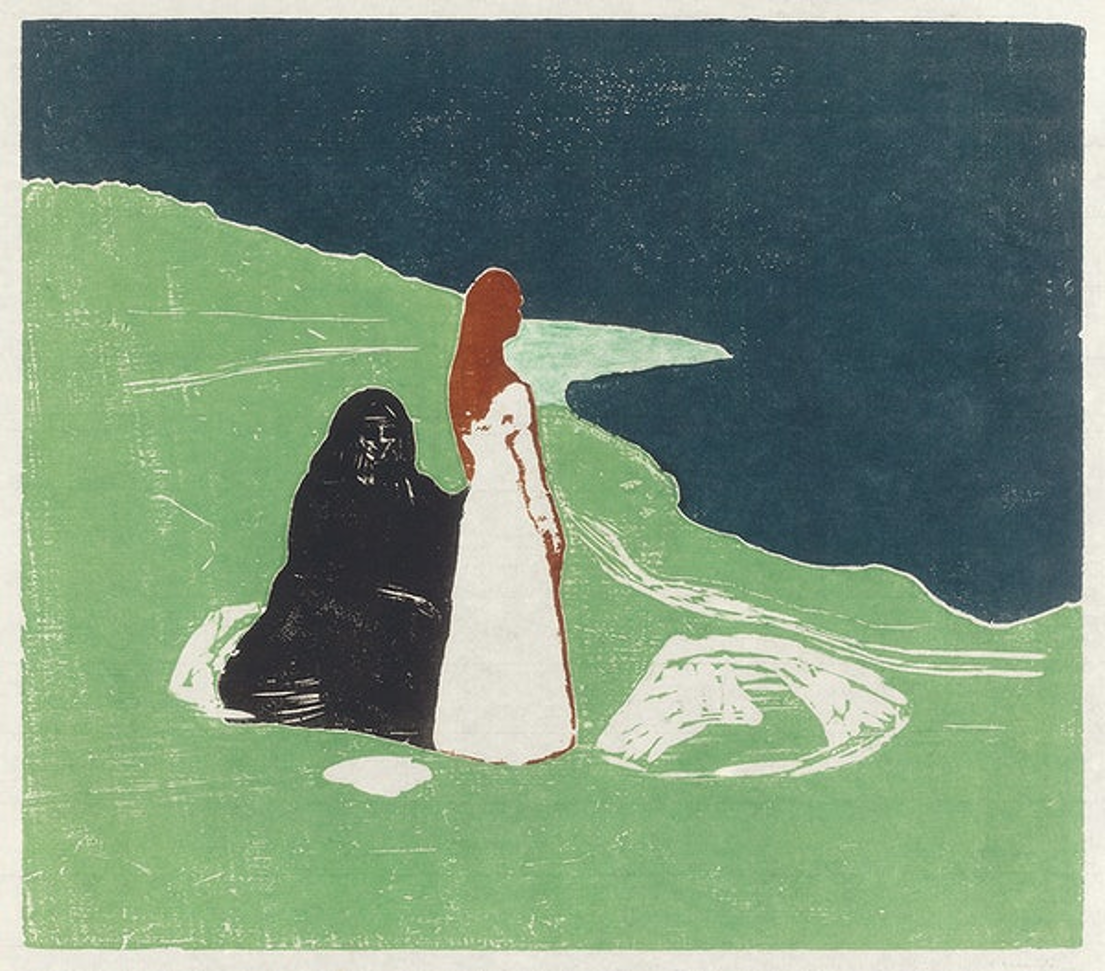
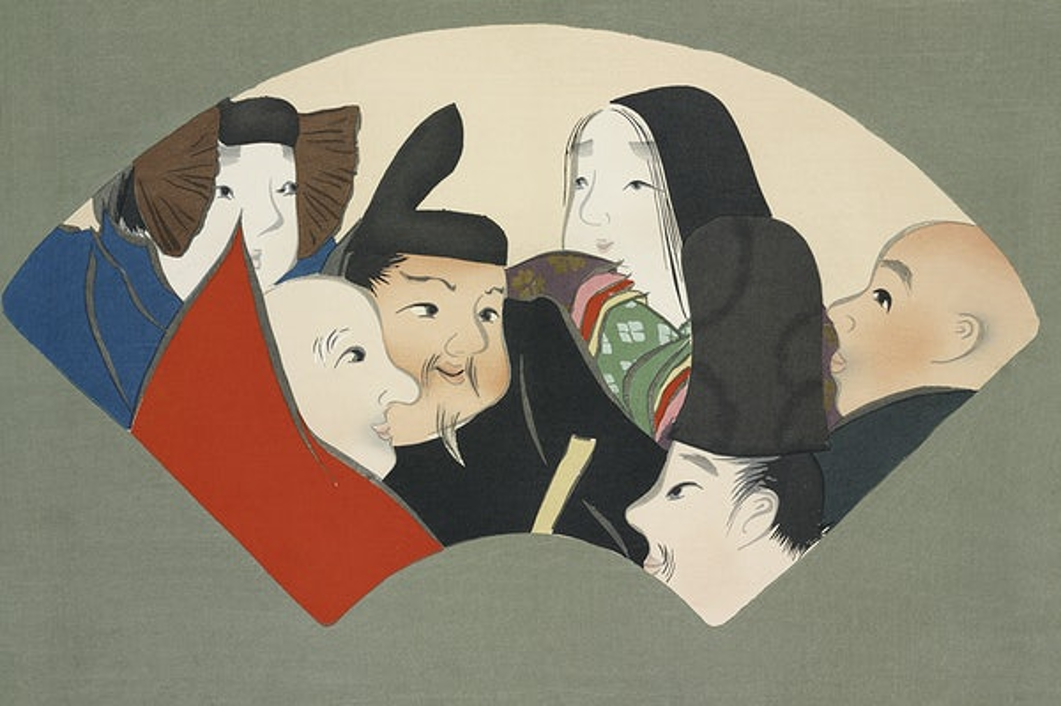
Move to slide 22 and instruct your students to choose one of the works of art and to compose dialogue for this character. The section of dialogue should be in response to the prompt: “How am I feeling? What am I thinking?” Students should review the examples of internal and external dialogue from their handout, review the rules for punctuating dialogue, and choose a work of art from the Dialogue Art choices. Once they have done this, instruct them to write four sentences of dialogue in which their character responds to the prompt: “How am I feeling? What am I thinking?” They should use external dialogue between characters, internal dialogue, or both, and they should imagine an event or situation that is driving this dialogue.
Extend #2
As an additional extension activity, you may wish to have your students explore the student activity Art for All. Students complete a virtual art tour in which they “visit” eight different locations and consider the message that they believe the artist wanted to send with their work. After viewing the artwork, students use the artwork that they selected from the first activity to create their own masterpiece. Finally, show the Graphic Designer - Calli Morris - Zoom Into Your Career video. In this video, students hear from Calli Morris, a professional artist who participated in our “Zoom into Your Career” speaker expo.
Calli is an award-winning graphic designer and illustrator based in Oklahoma. She graduated from the University of Oklahoma with a degree in visual communication. After viewing Calli’s career talk, have students reflect on the video by answering the question: How does the job in this video relate to the analysis of what characters in the art could be thinking/feeling?
Evaluate
Display slide 23 and instruct your students to compose a Flipgrid post with their products. In this Flipgrid post, they should present their chosen work of art and record their dialogue along with the picture. The effect is that when a peer watches the video, they simply see the picture of the work of art, but hear their peer’s voice reading the dialogue.
After the posts have been made, have students compose a final reflection of the process, answering the following questions on the Internal and External Dialogue Examples handout:
What was your method for developing your dialogue?
What was the impact of the art on your dialogue development?
How does the dialogue change the impact of the art?
How can art facilitate conversations?
Display slide 24 and take students back to the essential question: How can art facilitate conversations? As the culmination of this lesson, have a discussion out loud to answer the question. Students should be able to use specific examples from analyzing their chosen pieces of art, writing dialogue, and connecting the two.
Resources
Harry Potter Database. (2020, December 21). Sir Cadogan asks for the password - Harry Potter and the prisoner of AZKABAN deleted scene [Youtube]. https://www.youtube.com/watch?v=_7VNlLeNDGQ
Jessurun de Mesquita, S. (n.d.). Self–portrait with glasses and goatee (Zelfportret met bril en sik) [Digital image]. https://www.rawpixel.com/image/2698105/free-illustration-image-portrait-black-and-white-glasses
K20 Center. (2020, July 14). Graphic Designer - Calli Morris - Zoom Into Your Career. [Youtube]. https://www.youtube.com/watch?v=cuj8UYWdslc
K20 Center. (2021, March 18). Art for All. Student Resources. https://learn.k20center.ou.edu/student-resource/786
K20 Center. (n.d.). Card Sort. Strategies. https://learn.k20center.ou.edu/strategy/d9908066f654727934df7bf4f506976b
K20 Center. (n.d.). How Am I Feeling? What Am I Thinking?. Strategies. https://learn.k20center.ou.edu/strategy/187
Macbeth Acadamy. (2018, May 25). Grammar for kids: Punctuating dialogue. [Youtube]. https://www.youtube.com/watch?v=vZ4BbyBUSmA
MasterClass staff. (2021, August 30). How to Format Dialogue in Your Novel or Short Story. MasterClass. https://www.masterclass.com/articles/how-to-format-dialogue-in-your-novel-or-short-story#how-to-format-dialogue-in-a-story.
Munch, E. (2019, March 7). The Scream [Digital image]. https://commons.wikimedia.org/wiki/File:Edvard-Munch-The-Scream.jpg
Munch, E. (n.d.). Two Women on the Shore [Digital image]. https://www.rawpixel.com/image/2043765/two-women-the-shore
Picasso, P. (n.d.). Old Woman (Woman with Gloves) [Digital image]. https://en.wikipedia.org/wiki/Philadelphia_Museum_of_Art#/media/File:Pablo_Picasso,_1901,_Old_Woman_(Woman_with_Gloves),_oil_on_cardboard,_67_x_52.1_cm,_Philadelphia_Museum_of_Art.jpg
Sekka, K. (n.d.). Rokkasen from Momoyogusa–Flowers of a Hundred Generations [Digital image]. https://www.rawpixel.com/image/2049622/japanese-woodcut-print-kamisaka-sekka
Wood, G. (2012, May 15). American Gothic [Digital image]. https://commons.wikimedia.org/wiki/File:Grant_DeVolson_Wood_-_American_Gothic.jpg
[Armour, knight, horse, historic, museum, medieval, warrior, metal]. (n.d.). https://www.piqsels.com/en/public-domain-photo-jdlwt


